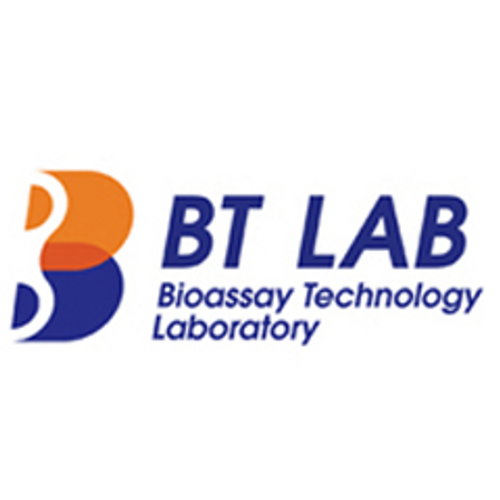Product Description
Pig Acyl-CoA desaturase (SCD) ELISA Kit | AE63274PI | Abebio
Species Reactivity: Pig (Sus scrofa; Porcine)
Abbreviation: SCD
Alternative Name: PRO1933; FADS5; MSTP008; SCD1; SCDOS; acyl-CoA desaturase|delta-9-desaturase|fatty acid desaturase|predicted protein of HQ0998|stearoyl-CoA desaturase 1|stearoyl-CoA desaturase opposite strand
Application: ELISA
Range: Request Information
Sensitivity: Request Information
Intra-Assay: ≤4.7%
Inter-Assay: ≤11.2%
Recovery: 0, 99
Sample Type: Serum, Plasma, Other biological fluids
Detection Method: Sandwich
Analysis Method : Quantitive
Test Principale: This assay employs a two-site sandwich ELISA to quantitate SCD in samples. An antibody specific for SCD has been pre-coated onto a microplate. Standards and samples are pipetted into the wells and anySCD present is bound by the immobilized antibody. After removing any unbound substances, a biotin-conjugated antibody specific for SCD is added to the wells. After washing, Streptavidin conjugated Horseradish Peroxidase (HRP) is added to the wells. Following a wash to remove any unbound avidin-enzyme reagent, a substrate solution is added to the wells and color develops in proportion to the amount of SCD bound in the initial step. The color development is stopped and the intensity of the color is measured.
Product Overview: Stearoyl-CoA desaturase (SCD; EC 1.14.99.5) is an iron-containing enzyme that catalyzes a rate-limiting step in the synthesis of unsaturated fatty acids. The principal product of SCD is oleic acid, which is formed by desaturation of stearic acid. The ratio of stearic acid to oleic acid has been implicated in the regulation of cell growth and differentiation through effects on cell membrane fluidity and signal transduction. Four SCD isoforms, Scd1 through Scd4, have been identified in mouse. In contrast, only 2 SCD isoforms, SCD1 and SCD5 (MIM 608370), have been identified in human. SCD1 shares about 85% amino acid identity with all 4 mouse SCD isoforms, as well as with rat Scd1 and Scd2. In contrast, SCD5 shares limited homology with the rodent SCDs and appears to be unique to primates .
Stability: The stability of ELISA kit is determined by the loss rate of activity. The loss rate of this kit is less than 5% within the expiration date under appropriate storage condition. The loss rate was determined by accelerated thermal degradation test. Keep the kit at 37°C for 4 and 7 days, and compare O.D.values of the kit kept at 37°C with that of at recommended temperature. (referring from China Biological Products Standard, which was calculated by the Arrhenius equation. For ELISA kit, 4 days storage at 37°C can be considered as 6 months at 2 - 8°C, which means 7 days at 37°C equaling 12 months at 2 - 8°C) .
 Euro
Euro
 USD
USD
 British Pound
British Pound
 NULL
NULL








